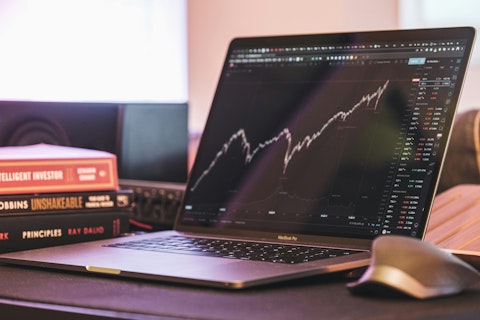There’s a particular discomfort that comes with watching an economy slow down while prices keep climbing. It feels off, like the gears of the machine are grinding against each other, rather than turning in sync. Economists have a word for this tension: stagflation. And while it hasn’t yet swallowed the U.S. economy, it’s no longer a ghost story from the 1970s. It’s a very real, very modern threat.
At its core, stagflation describes a rare economic dysfunction where growth stalls, inflation lingers, and unemployment creeps upward. It’s a policy trap: lower interest rates risk fueling inflation, while raising them threatens to further chill a cooling economy. And in 2025, that trapdoor looks increasingly ajar.
The U.S. economy already showed signs of buckling in Q1, when GDP contracted by –0.5%, the first quarterly decline in three years (BEA). That weakness wasn’t isolated, it came amid sharp declines in consumer sentiment, a drop in manufacturing orders, and a surge in front-loaded imports ahead of tariff hikes. The slowdown, in other words, wasn’t just a blip. It had fingerprints.
Meanwhile, inflation has refused to die quietly. Core PCE, the Fed’s preferred inflation gauge, sits at 3.5%, stubbornly above the 2% target. University of Michigan surveys show 1-year inflation expectations jumping to 5.1%, up from just 3.3% earlier this year, a sign that consumers are no longer convinced prices will stabilize soon. The prices are being juiced not by red-hot demand, but by supply shocks, especially tariffs.
That’s the elephant in the room. As of mid-2025, U.S. tariffs on Chinese goods stand at an effective 55%, a mix of global baseline, fentanyl-targeted duties, and legacy Section 301 penalties. If a fragile trade truce collapses in July, that number could spike to 89%. Economists have warned that these protectionist measures are injecting cost pressure across the supply chain, even as growth slows.
“Tariff-induced stagflation is now a real possibility,” says Torsten Sløk, Chief Economist at Apollo Global Management, who forecasts GDP at just 1.2% this year. Others echo the concern. JPMorgan estimates a 40% chance of recession in the second half of 2025, driven by what it calls a “stagflationary slowdown.” The Fed, meanwhile, is trapped between mandates. Officials like Austan Goolsbee insist this isn’t the 1970s redux, but even he concedes that “things could get worse,” citing the persistent inflation–unemployment tension
Markets have begun to reflect this unease. Defensive sectors are gaining favor — energy, healthcare, consumer staples — while interest-rate-sensitive growth names stumble. Equity strategists at Meketa note that “traditional monetary easing loses potency in stagflationary environments.”
It’s not just China either. The U.S. has broadened its tariff net, engaging in reciprocal duties with dozens of trade partners. That leaves companies exposed to both rising costs and weakened consumer demand, a difficult balance sheet to manage. The net effect is slower growth, hotter prices, and an equity market trying to figure out which way is up.
In this context, the idea of “stagflation stocks” isn’t academic; it’s survivalist. Investors need to think like wartime strategists: defensive positioning, supply chain resilience, and margin protection are the new alpha. What worked during the cheap-money boom won’t cut it now. Because if this is the new normal, the winners won’t be the fastest runners, they’ll be the best fortified.
Below is the list of the 12 Best Stagflation Stocks to Buy Now.

Stocks
Methodology
For our list, we’ve picked defensive stocks in the consumer-staple industry from consumer-staple ETFs. We’ve passed them through multiple filters to bring you the best stocks. These criteria included the stocks being China-light, or China-free in terms of their supply chains, ones that have gross margin durability regardless of input cost volatility, and good pricing power. Essentially, these are stocks that, in large part, would remain less affected due to the trade war. We’ve ranked them based on their hedge fund sentiment as of Q1 2025.
Why are we interested in the stocks that hedge funds pile into? The reason is simple: our research has shown that we can outperform the market by imitating the top stock picks of the best hedge funds. Our quarterly newsletter’s strategy selects 14 small-cap and large-cap stocks every quarter and has returned 373.4% since May 2014, beating its benchmark by 218 percentage points (see more details here).
12. Church & Dwight, Co., Inc. (NYSE:CHD)
Number of Hedge Fund Holders: 43
Church & Dwight, Co., Inc. (NYSE:CHD) is one of the Best Stagflation Stocks to Buy Now. In early May 2025, the company unveiled a major shift: it had begun relocating production for key items, like Waterpik flossers, out of China. Management expects this adjustment to trim roughly 80% of its ~$190 million anticipated annual tariff exposure.
On June 2, 2025, RBC Capital Markets analysts raised CHD’s rating from Sector Perform to Outperform and raised its price target from $100 to $114. RBC noted that ongoing engagement with CHD’s leadership, particularly the CEO and CFO, reinforced their view that the company’s current guidance accurately reflects ongoing challenges. They also highlighted CHD’s acquisition of Touchland as a strategic and growth-positive move, citing the brand’s strong loyalty and distribution potential. Essentially, RBC believes CHD has the right blend of tariff mitigation and portfolio expansion to regain momentum.
Church & Dwight (NYSE:CHD) makes and sells everyday essentials like Arm & Hammer, OxiClean, Waterpik, and Batiste, positioning itself as a defensive stalwart in consumer staples.
11. General Mills, Inc. (NYSE:GIS)
Number of Hedge Fund Holders: 43
General Mills, Inc. (NYSE:GIS) is one of the Best Stagflation Stocks to Buy Now. On June 26, 2025, Bank of America reaffirmed its confidence in General Mills (NYSE:GIS), and maintained a Buy rating despite trimming its price target from $63 to $61. The analysts believe the company’s fiscal 2026 guidance, though conservative, is achievable and that the market may have overreacted to recent forward-looking statements. Analysts pointed to General Mills’ long history of operational consistency and a still-strong dividend yield – now hovering near 4.7% – as key reasons to remain constructive. The note emphasized that while the path ahead includes some execution risk, especially in managing trade promotions and category reinvestments, the overall valuation remains attractive for long-term defensive positioning.
On the same day, Mizuho took a more tempered view, reiterating a Neutral stance and holding its price target steady at $60. Their analysts highlighted that while a majority of General Mills’ North American retail business is holding or gaining market share, macro uncertainty and shifting consumer behavior make near-term upside less certain. They acknowledged the company’s efforts to balance cost efficiency with innovation, particularly its push into fresh pet food, but chose to remain on the sidelines until there’s clearer evidence that growth initiatives are translating into stronger volume trends.
General Mills (NYSE:GIS) is one of the largest packaged food companies in the United States, known for brands like Cheerios, Betty Crocker, Pillsbury, Haagen-Dazs, Nature Valley, and Blue Buffalo.




